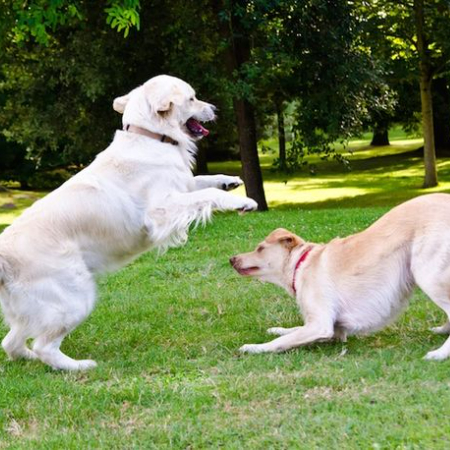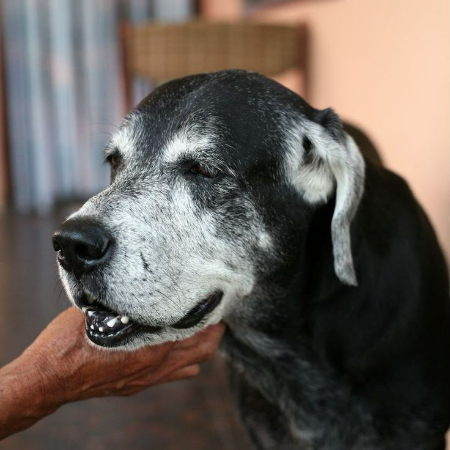Debunking Common Myths About Dogs: Separating Fact from Fiction
Even though dogs and humans have been friends for thousands of years, there are still a lot of myths and false beliefs about these devoted creatures.
These beliefs, whether they are passed down through the generations or supported by popular culture, have the potential to cause misconceptions about how to treat and relate to dogs. Let’s examine some popular dog myths in more detail and learn the truths behind them.
Dogs Only See in Black and White
The idea that dogs can only see in black and white is one of the more persistent ones about them. Dogs have color vision, but it’s not the same as human eyesight. Dogs perceive mostly in blue and yellow tones since they have dichromatic vision.

Dogs only have two types of color receptors, or cones, compared to three types in humans, which enable us to perceive the whole range of colors. Dogs can readily perceive blues and yellows because of this difference, but they have difficulty distinguishing red from green.
For instance, a dog may perceive a red ball as grayish, while a blue ball will shine out. Dogs’ unusual eyesight talents allow them to perceive color despite their narrow color spectrum.
A Wagging Tail Means a Dog Is Happy
Even while a joyful dog is usually linked with a wagging tail, a dog’s feelings are not always accurately conveyed by its tail. Dogs can wag their tails for a variety of reasons, such as hostility, anxiousness, or enthusiasm.
You must take into account the dog’s entire body language, the location of its tail, and the pace at which it wags in order to effectively decipher its emotional condition. For example, a tail that wails slowly may be an indication of hesitancy or doubt, whereas a tail that wails quickly may be an indication of enthusiasm or restlessness.
Paying attention to the dog’s full body language—rather than just the tail—is necessary to decipher these subtle indications. Beyond simply moving their tail, you may better understand what your dog is attempting to say by paying attention to these small characteristics.
Dogs Eat Grass Because They’re Sick
It’s a common misconception that a dog eating grass means it’s sick, but this isn’t always the case. Dogs that eat grass frequently do so for a variety of reasons unrelated to digestive problems. Dogs may graze on grass because they are bored, because they need more fiber in their diet, or just because they like the way it tastes.

While grass-eating on occasion is usually safe, it might be worth talking to a veterinarian to rule out any underlying health issues if it starts to happen frequently. Recognizing that a dog’s grass-eating habit may be typical enables pet owners to attend to their dog’s demands and guarantee their wellbeing.
Dogs Only Need to Be Groomed When They’re Dirty
For a dog’s health, regular grooming is more important than merely keeping them clean. It is essential for controlling shedding, avoiding matting, and enabling you to examine your pet for parasites or skin problems.
Frequent brushing promotes the distribution of natural oils throughout the coat, helps remove loose fur and grime, and stops the development of uncomfortable mats and tangles. Grooming sessions also provide a great chance to identify possible health issues, such as fleas, ticks, or skin infections, early on.
You can keep an eye on your dog’s general health and maintain a healthy, well-maintained coat by incorporating regular brushing into their routine. Maintaining your physical health and the relationship you share with your pet are strengthened by regular grooming.
Myth: Dogs Age Seven Years for Every Human Year
The dog aging theory that “one dog year equals seven human years” is simplistic. The truth is that a dog’s aging process differs depending on its size and breed; bigger dogs age more quickly than smaller kinds.

For dog aging, the American Veterinary Medical Association provides a more precise formula. This formula states that a dog’s first year of existence is about equal to fifteen human years, its second year is roughly equal to nine human years, and each year after that is roughly equal to five human years.
This method recognizes that dogs age more slowly as they become older and that they progress swiftly in their early years. Pet owners may better understand and meet the health needs and aging process of their dogs by utilizing this more thorough formula.
Enhancing Your Pet Care Through Knowledge and Understanding
Being aware of the facts behind these widespread misconceptions can make you a better and more knowledgeable pet owner. We can make sure we provide our dogs with the finest care and cultivate a more truthful and loving relationship with them by dispelling common misunderstandings about them.
You’ll be prepared to dispel these myths and provide the truth about our cherished animal companions the next time you hear one!
Doglime for more dog-related information.










